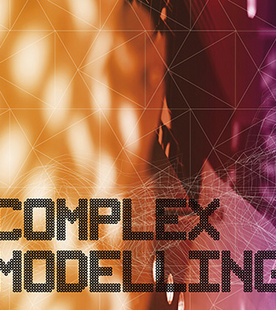Deep Sight
Deep Sight develops design-focused visualisation techniques enabling designers to non-intrusively gain understandings of the interior heterogeneous structure of familiar and emerging bio-materials. Methods from the field of biological imaging are tested and extended to support visualisation and manipulation of 3D volumetric datasets for application within design and making contexts.
In response to global challenges of resource scarcity, increasing attention is being paid to bio-based materials - a domain that covers familiar materials such as timber and emerging materials such as bioplastics and mycelium composites. A common characteristic of biomaterials is their heterogeneous and variegated structure. The ability to observe, analyse, understand and design with this interior heterogeneity is a necessity for a bio-based and cyclical material practice and opens a deep reservoir of creative and technical innovation potentials within architecture and aligned design practices.

Non-intrusive acquisition of 3d data of complex biological structures is key for an integration of this approach into design and fabrication processes. Current methods include Computed Tomography (CT), Confocal Microscopy and Magnetic Resonance Imaging (MRI). However, the datasets produced by these approaches require complex processing before quantitative and qualitative information can be extracted. A further complication is that data-processing and segmentation methods differ depending on the type of features or characteristics being investigated such as boundaries, bulk regions, local regions, groupings, networks, feature orientations, densities, etc. This presents challenges for those without expert knowledge in biological imaging and data-processing processes and practices.
The research question underpinning Deep Sight can therefore be stated as:
How can we effectively transfer existing 3d volumetric data processing methods from the field of biological imaging and tailor these for:
- analysis and segmentation of a broad range of bio-materials;
- the translation of acquired datasets into data structures commonly associated with digital design workflows;
- visualisation and manipulation of data with design workflows?
Contribution/Innovation
Deep Sight contributes a computational framework for visualising the precise interior structure of bio-material specimens and making this data accessible for design and analytic engagement. The key insight of the work is that effective transfer into design-led workflows requires data supplementation, data translation and semantic augmentation. Using the framework, these processes are demonstrated through three cases studies that target different bio-material characteristics and features within 1) timber logs; 2) cellulose-based bio composites; 3) mycelium composites; making high-quality interior data of bio-materials accessible within design-orientated digital workflows.

Deep Sight is an open-source library written in C++ that uses particular aspects of established tools and frameworks such as [VTK (The Visualization Toolkit)](https://vtk.org/), [OpenVDB](https://www.openvdb.org/), and [OpenCV](https://opencv.org/). Python bindings allow the core Deep Sight library to be interfaced with other software platforms and digital content creation applications such as Blender and Rhino 3d.
Publications
Svilans, T., Gatz, S., Tyse, G., Ramsgaard Thomsen, M., Ayres, P., Tamke, M. (2022). Deep Sight - A Toolkit for Design-Focused Analysis of Volumetric Datasets. In C. Gengnagel, O. Baverel, G. Betti, M. Popescu, M. Ramsgaard Thomsen, & J. Wurm (Eds.), Towards Radical Regeneration (pp. 543–555). Springer International Publishing. https://doi.org/10.1007/978-3-031-13249-0_43 (ResearchGate)







